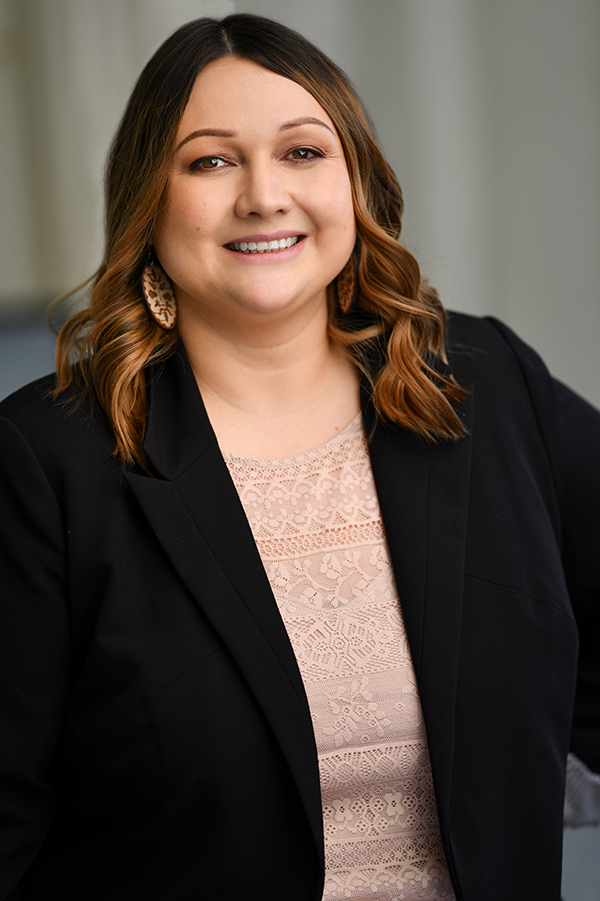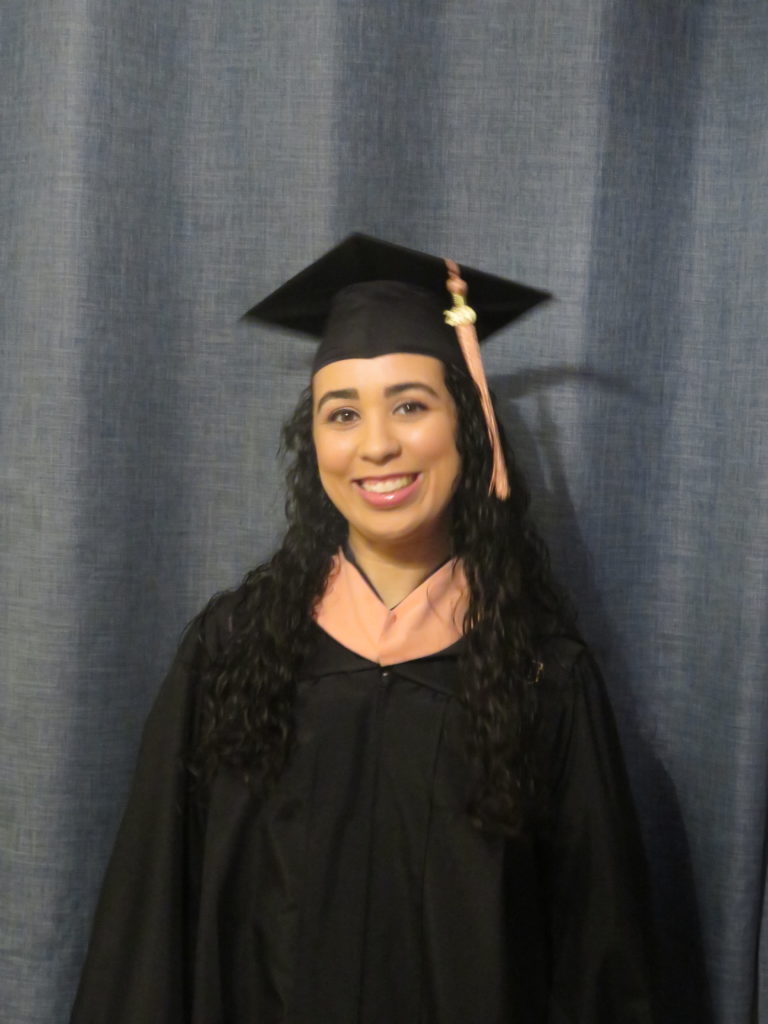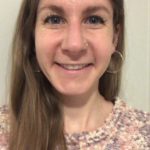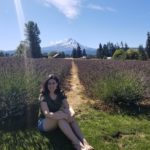
Delilah Robb is pursuing her Masters of Public Health in the Maternal and Child Health program at the University of Minnesota. She is an enrolled member of the Turtle Mountain Band of Chippewa Indians. In addition to her studies, she works as a community health educator at the Indian Health Board (IHB) of Minneapolis. She is interested in many American Indian/Alaska Native (AI/AN) areas of health, including: maternal and child health, sexual and reproductive health, social determinants of health, and cancer prevention. She is also researching Human Papillomavirus (HPV) Knowledge, Attitudes, and Cultural Beliefs of American Indian Men as part of the Tribal Researchers’ Cancer Control Fellowship Program, sponsored by the Northwest Portland Area Indian Health Board, Native American Research Center for Health, and National Cancer Institute.
Interest in AI/AN Health
My interest in AI/AN health began during the summer of 2013 while interning at the Sanford Research Center in Sioux Falls, SD. I learned about AI/AN health disparities, their magnitude, and how representative they were within my family. I credit this internship with sparking my foundational interest in public health. My passion for AI/AN public health and research continued to develop during my undergraduate years while completing two additional research internships at the Native American Research Internship at the University of Utah, which also focused on American Indian health issues. I worked partnerships with Tribal and urban American Indian communities to conduct community-based research projects and have experience coordinating, implementing, and evaluating health programs. See Delilah’s LinkedIn for detailed work history.
Sex Education with the AI/AN Community
The Indian Health Board of Minneapolis (IHB) is a community clinic focused on promoting health care to (AI/AN) in Phillips Neighborhood of South Minneapolis. IHB was established in 1971 in response to the poor health care AI/AN people were receiving in the area. The clinic provides medical, dental, mental and behavioral services and health education to people of any race or ethnicity (n.d. Indian Health Board). My primary audience is the AI/AN community, but my classes are always open to anyone who wants to attend. In Minnesota and nationally, AI/AN have some of the highest sexually transmitted infections (STI) (Minnesota Department of Health, 2019) and teen birth rates (Farris et al., 2018).
I use comprehensive sex education (CSE) and AI/AN sexual health curricula grounded in culture. CSE is a rights-based approach that teaches sex and sexuality as natural and normal while using medically accurate terminology. CSE includes education on gender expression, sexual orientation, puberty, condoms use, birth control, and STI and HIV prevention. It also contains lessons on self-esteem, alcohol and drug use, addressing stigma, gender-based violence, discrimination, equity, boundaries, and healthy relationship with romantic partners, friends, and family. CSE aims to empower youth and young adults to be critical thinkers, use negotiation skills, advocate for themselves, and nurture positive attitudes towards sexuality (Panchaud & Anderson, 2014). Several research findings show CSE is an effective approach that supports youth in delaying sex, having healthy relationships, lowering unintended pregnancy, and contracting STI, compared to abstinence-based sex education curricula (Chin et al., 2012). Holistically educating AI/AN youth and young adults using CSE is culturally appropriate, as American Indian wellness is based on treating a person mentally, physically, emotionally, and spiritually (Anderson & Olsen et al., 2013).
The Development of our American Indian Sexual Health Campaign
My work as a community health educator also includes outreach and health promotional activities. In 2019 and 2020, I led the development of an American Indian sexual health campaign. The campaign included print and digital materials; both were informed and grounded in community and culture. The campaign’s primary goals were to 1). Increase sexually transmitted infections testing and screening 2). Increase the access and use of contraception 3). Destigmatize conversation about sexual health. Three community listening sessions with the Minneapolis American Indian community informed the themes for the sexual health videos. The listening sessions’ primary objective was to gather community input for the American Indian sexual health videos. The secondary objective was to identify gaps in sexual health care services the IHB provides and what is needed to increase access to sexual health care services.


The listening session planning phase, approximately four months, included recruitment and question and activity development. We recruited through our partnerships with community organizations, bulletin boards, social media, and email. Thirty-four community members attended the listening sessions. All attendees received a catered meal and a $50 gift card for compensation for their time and knowledge. During the three-hour-long listening session, we asked a series of questions using interactive activities. Activities included small and large group discussions, voting using stickers, and an individual anonymous worksheet. Each session also incorporated cultural traditions such as an offering for sharing their knowledge with IHB and a talking circle to process the discussion. Sexual health is a sensitive topic, and it is essential to provide sharing time and additional resources.
The youth listening session questions assessed how and where youth would like to get sexual health information, what motivates them to get services, and what barriers and support affect access to services. We discussed what beliefs their family, community, and tribe have about sexual health and what they wished was shared with them. Lastly, we shared three public service announcements and asked them what they liked about the messages and if they were believable and trustworthy. The parent listening session questions were similar; however, they focused more on their children’s sexual health and what support they needed to ensure their children’s sexual health care needs are met. The community listening sessions summary of findings can be found here.
Red Circle, the production company, used the summary of findings to create the videos’ themes and messages. We filmed thirteen American Indian youth, community members, and professionals who were interviewed for the videos. The interview transcripts were reviewed to parse out the most relevant content. The Indian Health Board of Minneapolis hosted a virtual video premiere on Facebook, shared the videos on YouTube and Good Health TV, a subscription-based health education network used in IHB’s clinic waiting area. Red Circle also developed 14 similar marketing collateral items for the digital/print campaign, which were disseminated on social media, Twin-Cities metro transit, The Circle newspaper, and community bulletin boards. The videos can be found on Indian Health Board’s YouTube page using these links, Start the Conversation and The Intersection.
Planning began in July 2019, and the listening sessions were in October and November 2019. Interview filming wrapped up in March 2020, right before Minnesota went on lockdown for COVID-19. The videos were released in August 2020. Disseminating and evaluating the campaign has been challenging due to COVID-19. The campaign will be evaluated by measuring its reach on social media and metro transit. We will also track birth control prescriptions and STI testing using the electronic health record system at IHB.
One of the project’s biggest take-aways is the need to provide community space to talk about sexual health in a non-stigmatizing safe space. Every day my community inspires me to continue this work. This work was made possible with the support and assistance of many people. Miigwech (thank you in Ojibwe) to the following people:
Minneapolis – St. Paul American Indian Community Members
Indian Health Board Staff
- Lois Brown, Leech Lake Ojibwe, Health Programs Supervisor
- Brittenany Gillespie, Siksiká First Nations, Health Program Support Tech,
- Lizz Wenzel, Health Educator
Technical assistance
- Khadijah Cooper, Annex Teen Clinic
- Emily Scribner-O’Pray & Lisa D Turnham, Hennepin County
Facility uses
- Division of Indian Work
- Minnesota Indian Women’s Resource Center
Video production and marketing collateral
- Red Circle
Listening Session Summary of Findings created by
- Urban Indian Health Institute, Communication Team
Funding
- Minnesota Department of Health Family Planning Special Projects Grant
References
Anderson K., & Olson, S. (2013). Leveraging Culture to Address Health Inequalities – Examples from Native Communities: Workshop Summary.
Farris, J., Austin, J., & Brown, C. (2020). 2020 Adolescent Sexual Health Report. Minneapolis, MN: University of Minnesota Healthy Youth Development, Prevention Research Center
Indian Health Board of Minneapolis (n.d.). About Us. Indian Health Board of Minneapolis. https://www.indianhealthboard.com/about/
Minnesota Department of Health (2019). STD Surveillance Report Data Tables, Minnesota 2019. https://www.health.state.mn.us/diseases/stds/stats/2019/stdtables.pdf
Panchaud, C., & Anderson, R. (2014). Demystifying Data: Using Evidence to Improve Young People’s Sexual Health and Rights—Workshop Toolkit. Guttmacher Institute.


